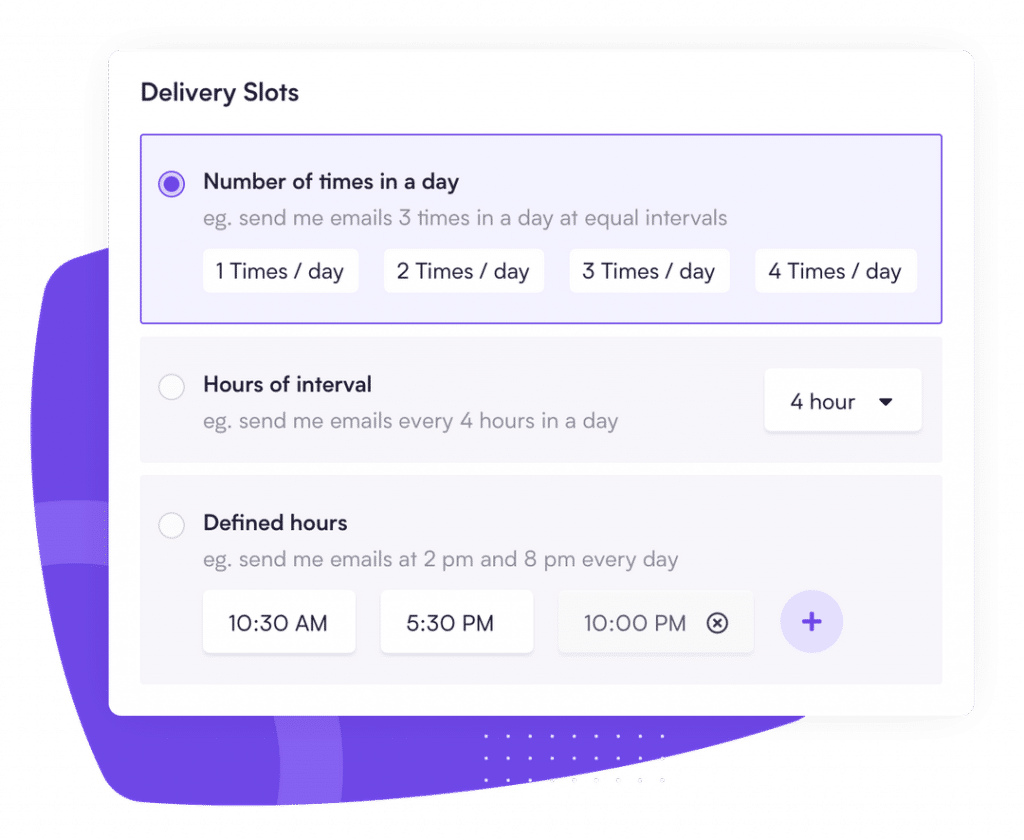While email is among the most essential part of the modern-day era, it can’t be denied that for most of us browsing through them is a chore. Not to mention that things like Inbox Zero becomes like a Holy Grail. Over the past 15 years – since the launch of Gmail on April 1st, 2004 – the status quo has barely changed. But we’re seeing a renewed interest in the space with services like Superhuman (helping users go through their emails quickly) or Hey (which reimagines an email service from the ground up). However, what if all you are looking for is a way to control how frequently you get emails? Basically, a firewall between your email inbox and sender so that emails don’t become a constant source of distraction.
Enter Mailman, a simple-yet-brilliant service that acts like a mailman for your email inbox. It lets you configure when your email inbox should receive emails (by setting up the frequency or certain times during the day), and then only sends the emails in batches. We recently got a chance to interact with Mailman’s CEO Mohit Mamoria about his journey, how he got the idea about the product, its future, and more.
PS: the interview has been edited for the sake of brevity.

Table of Contents
1) Before we begin talking about Mailman, our readers would love to know your journey into the world of SaaS?
I ventured into building products in the year 2013. That’s the year I graduated from my college, but even during my studies, for the last two years, I was building apps and websites as a service.
As part of our curriculum, for the last semester of our graduation, we had to get a full-time internship and get real-world experience. From January 2013 to July 2013, I worked at 91mobiles as an early employee and the first engineer.
At 91mobiles, I saw the different world of building products. Here I saw how the entire company was working on a single product all the time, and that product would be used by hundreds of thousands of people when released.
It blew my mind.
I recapped all the apps I built when consulting and realized that over 80 percent of them were internal invoicing apps. So, I decided to put all the good parts of those projects together and build a minimal and simple invoicing tool for small businesses. That was the first SaaS product I launched, in 2013.
2) What insights led you to launch Mailman?
Let me be brutally honest here. Mailman came to be in the weirdest way possible.
Here, in India, in 2019, I was sitting and dabbling with random things to build. I needed time to be in the flow state and do something productive. But I always had this one tab pinned in my browser – my Gmail inbox. Whenever thinking, I’ll quickly go to the tab and see if there are any new emails.
And then, within minutes, I’ll be totally distracted into my inbox. Hours would be gone.
I tried tools to pause my inbox, but they were just a click away to disable. And it was hard to get control over myself.
So, I wrote a simple Gmail script for myself. The script would pause my inbox and deliver all emails at 4-hour intervals. The beauty of the script was that it was difficult to turn it off. I had to open one more tab, go to the control panel, and then, disable the script. This friction was too much for my lazy mind. I never disabled it.
Fast forward to February 2020. Andrew Wilkinson of Tiny tweeted out something similar. He was looking for a solution that would batch deliver his emails only a few times a day. I immediately wrote him an email with the demo.
We spoke about the problem and solution, and over 8 email exchanges, we decided to build it into a product, and that’s how Mailman was brought into existence.
It’s just that, both Andrew and I faced a similar problem and came to similar conclusions independently, and yet there was no product that could solve the problem.
3) Could you share the growth you’ve seen since the launch of Mailman? Any user numbers that you could share?
We release a beta of Mailman in August 2020 and finally released it to public in October 2020. Since our beta, we have seen thousands of users signing up, and of them, over two hundred users upgraded to a paid plan.
We have healthy MRR and it’s growing every day.
4) We’re suddenly seeing a lot of interesting ideas for email services, which has been the same for almost a decade. What according to you has changed, and what still makes email special, despite new-age messaging and collaboration options?
Email is not going anywhere. It’s a robust medium of communication, but the problem is that the use-cases for which this medium is used have evolved quicker than the email itself.
The email was a messaging protocol. Now, email is used for newsletters, notifications, promotions, sales, and of course, messaging.
Almost everybody who has tried to solve the inbox overload has gone in the direction of “building an email client”. Some tried to build a full email service from the ground up.
What they miss, according to me, is that changing email clients or services is easier said than done. It requires a huge behavior change and is usually the biggest hurdle to cross for an average user.
Mailman on the other hand, went absolutely the other way. Mailman is a plugin and works with any email client that supports Gmail. So, users can continue to use their same old Gmail account on their favorite email client, but with the added superpowers of Mailman.
No big behavior changes required, as this tweet suggests.
5) On that note, how do you stand out? Put another way, can’t Gmail just add certain features to offer what Mailman does?
Yes, they can, and they should. In fact, when Gmail released Inbox several years ago, they had a killer feature – Bundles. With bundles, you can define what kind of emails to be delivered when. In batches.
Unfortunately, Inbox has shut down soon after.
It’s a constant risk of building a business on top of someone else’s platform. For example, all the sellers selling on Amazon should be careful because Amazon can start manufacturing and selling the best-selling products on their own.

The same is true with Mailman too. Gmail can someday decide to add Mailman-like features, but here’s why they’ll have to think twice before doing so. They are a standardized email platform. They have to cater to the needs of average email users, not just the productivity nerds.
On the other hand, because Mailman is a specialized tool that only appeals to productivity nerds, we can do productivity-based things at a faster rate than the email service on top of which we are built.
And Mailman will evolve as well with time, and it might evolve into a direction that is different from what Gmail (the team) stands for.
6) Could you shed a light on your marketing strategy to reach out to potential users?
As mentioned earlier, Mailman is a specialized tool that only appeals to productivity nerds. Because of this, we are charting some specific territories when it comes to marketing.
We are spending a ton on Google Ads to target specific productivity-based searches. We are also partnering with people, newsletters, and podcasts, who cater to these productivity nerds.
7) What’s next from Mailman? Any new features that users should be looking out for?
There are a ton of things under development. We have just released a brand-new version of Daily Digest. Daily Digest is the feature that our users use to review what kind of emails they want to receive and what kind of emails they want to block.
The next major release will be a feed-like experience to read all your newsletters together. Tools, where newsletters are consumed, need to keep up the pace with the growth of the newsletters themselves.
8) What are your favorite SaaS products out there?
There are so many I use and pay for. From the top of my head, my favorites are Stripe, Figma, and Slack.






